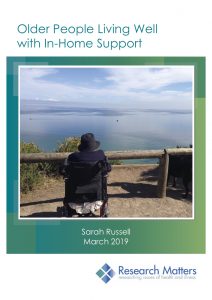The aged care crises continue under a Labor government
It has been four years since the Royal Commission into Aged Care Quality and Safety’s final report was tabled in federal parliament. Unfortunately, Labor’s so-called “generational” reforms to aged care fail to address fundamental systemic issues.
In her recent damning report on the progress of the recommendations of the royal commission, the aged care inspector general, Natalie Siegel-Brown, cuts through Labor’s spin. She states: “Despite the volume and pace of reform, a number of actions that would have seeded transformational change have not yet been delivered, some actions are not actively being considered, and indeed the manner of implementation in some areas may bring about unintended consequences.”
The government has celebrated the passage of its new Aged Care Act 2024. This is undoubtedly an important reform. However, it fails to take the leap from a provider-focused system to one that genuinely places the rights of older people front and centre.
The new aged care act has been promoted as a rights-based framework for the delivery of aged care. However, Stephen Duckett described the new aged care act as “rights washing”. According to Duckett: “(The) high sounding rhetoric is simply there to placate consumers and advocates, allowing providers to continue on their way unimpeded.”
Although the new Aged Care Act includes a Statement of Rights that outlines the rights older people will have when accessing aged care services, these rights are not legally enforceable. When a right is breached, the only recourse will be to make a complaint.
Thankfully, older people have the right to “live without abuse and neglect”. However, other important rights have not been included in the new aged care act, including the right to freedom from restraints. Despite the royal commission identifying an urgent need to respond to the significant over-reliance on chemical restraint in aged care homes, the new aged care act does not restrict the prescription of psychotropic medication or adequately address the use of restraints.
Most importantly, the Labor government has chosen not to implement the Royal Commission’s call for a demand-driven system providing universal access to aged care based on assessed need. The rights-based framework established under the new aged care act does not give an older person an entitlement to receive care. It only gives an older person an entitlement to an assessment.
Labor has introduced a Single Assessment System. It has also handed out nearly $1.5 billion to private operators to conduct aged care assessments. We now have aged care assessments being conducted by organisations that also deliver aged care support, a clear conflict of interest.
Catholic Healthcare, for example, operates 42 residential aged care homes and provides home care services to about 4,000 older Australians. It was awarded nearly $136 million to undertake aged care assessments until 2029. The Aged Care Royal Commission expressly warned against this, recommending that all assessments be undertaken by an assessor who was not involved in providing aged care so that a person’s level of funding would be determined independently.
After rejecting the recommendation to finance the aged care system through an aged care levy, the Labor government convened yet another taskforce in 2023. It was Aged Care Taskforce, not the Royal Commission, that recommended a funding model in which people should make a co-contribution to their care costs based on their ability to pay.
The new co-contribution funding model is primarily focussed on a medical not social model of care. While the new Support at Home program will cover costs of clinical care, non-clinical care such as domestic help and gardening will be subject to co-payments. The out-of-pocket costs for domestic and gardening services will range from 17.5% for full pensioners to 80% for self-funded retirees.
Assistance with showering has been categorised as non-clinical. The cost of a shower will range from 5% for full pensioners to 50% for self-funded retirees. If an older person cannot afford the co-payment for a shower, they may need to skip it. This not only has implications for a person’s hygiene but also their dignity.
While exceptions will be made for people who satisfy hardship provisions, the process of making the application with Services Australia will be difficult for some older, vulnerable people.
The aged care inspector general, Natalie Siegel-Brown, described charging fees for services that support social and community engagement as “inconsistent with the [new aged care] act’s approach to high quality care, particularly the importance of individuals participating in meaningful and respectful activities”.
After a royal commission that cost $92 million, and a Labor government that campaigned in 2022 on implementing aged care reforms, many of us expected genuine aged care reform. Instead, here we are again with media headlines declaring an “Aged Care Crisis”.
First published in Pearls and Irritations on 12 September 2025
